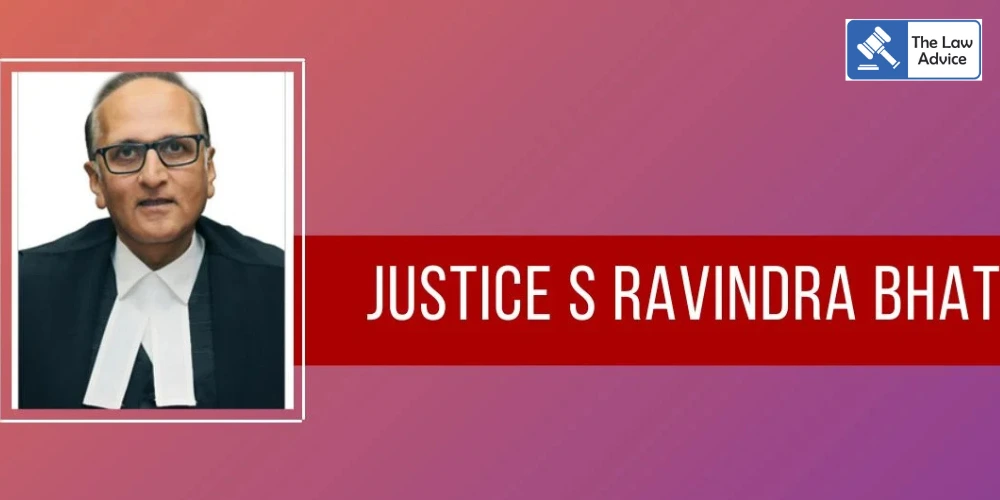New Delhi | August 2025 –
Justice (Retd.) S. Ravindra Bhat, former Judge of the Supreme Court of India, has emphasized the urgent need to reform the administration of the district judiciary, which forms the bedrock of the Indian judicial system. In his essay “The Administration of the District Judiciary in India: Challenges and Opportunities” (published in [In]Complete Justice? The Supreme Court at 75, Juggernaut Books, edited by Justice S. Muralidhar), Justice Bhat highlights both the structural challenges and the transformative opportunities that lie ahead for India’s courts at the district level.
The District Judiciary: Foundation of India’s Judicial Pyramid
While the Constitution of India envisages a federal structure for the legislature and executive, the judiciary functions as a single integrated pyramid. At its base lie the district courts, handling disputes of citizens at the most immediate level. Above them stand the High Courts, and at the apex, the Supreme Court of India.
Unlike the higher judiciary, district courts are funded and partly administered by the states, though they remain under the overall supervision of the High Courts. Justice Bhat points out that this design was a conscious choice by the framers of the Constitution, ensuring uniformity of standards, accountability, and the independence of the judiciary across the country.
Growing Burden: Pendency, Vacancies and Infrastructure Gaps
The independence of the judiciary, Justice Bhat argues, is only meaningful when it is accompanied by efficiency, fairness, and access to justice. Yet, the district courts face serious systemic challenges:
• Heavy case pendency and arrears
• Shortage of judges and staff
• Inadequate infrastructure and poor working conditions
• Limited budgetary allocation and poor utilization of funds
For instance, between July 2022 and June 2023, district courts across India disposed of over 2.55 crore cases across 710 districts – a staggering figure that underscores both the efficiency and crushing workload of district judges. However, pendency continues to rise because the system lacks institutional support mechanisms to match growing litigation.
Need for Specialized Cadres
A central proposal in Justice Bhat’s essay is the creation of specialized administrative cadres within the district judiciary. Currently, judges are overburdened not only with judicial work but also with administrative duties. Similarly, court staff are often diverted to data-entry tasks without proper training.
To address this, Justice Bhat recommends:
• A judicial administration cadre comprising statisticians and data analysts to manage case-flow information, identify trends, and prepare evidence-based policy recommendations.
• A dedicated IT cadre to oversee digital infrastructure, e-filing, and digitization of records.
• Separate administrative cadres for budget planning, infrastructure management, and court logistics.
Such cadres would allow judges to focus on their core judicial functions, ensure consistent and accurate data collection, and enable better long-term policy planning.
Harnessing Data for Judicial Reform
The National Judicial Data Grid (NJDG), launched in 2015, has already created a digital repository of case data across all courts. While it promotes transparency, Justice Bhat notes its limitations – such as lack of historical datasets and reliance on overworked staff for data entry. As of November 3, 2024, over 7 crore judicial orders remained un-uploaded, reflecting a major backlog in digitization.
To bridge this gap, Justice Bhat argues for district-level data professionals who can ensure real-time, accurate judicial analytics, which in turn will help courts prioritize cases through case-flow management models.
Judicial Impact Assessment: An Urgent Need
Justice Bhat also revives the call for Judicial Impact Assessments (JIA) – a process of evaluating how new legislation affects court workloads. He recalls that as far back as 2005, a report had recommended that every bill must include an estimate of the additional litigation it would generate and the judicial resources needed to handle it.
Yet in practice, new laws frequently add to the burden of district courts without corresponding budgetary support. For example:
• The Section 138 amendment to the Negotiable Instruments Act in 1989 led to nearly 25 lakh cheque-bounce cases flooding district courts.
• The Maharashtra Slum Areas Act, 1971 has generated decades-long litigation in the Bombay High Court.
Justice Bhat stresses that performance audits of legislation and judicial processes should be institutionalized, not left to ad hoc court orders. This requires collaboration between the judiciary, executive, and expert researchers, backed by robust data.
Towards Sustainable Judicial Administration
The essay underlines that judicial administration is not a mere support service but the engine that drives judicial independence. Without efficient systems for data management, budgeting, infrastructure planning, and case prioritization, the promise of justice remains undermined.
Justice Bhat concludes that filling judicial vacancies alone will not solve pendency. What India needs is structural reform – distinct cadres for administration, scientific planning for infrastructure, and evidence-based policymaking. Such reforms would ensure that judicial officers are free to focus on adjudication, while trained professionals handle specialized tasks.
A Call for New Thinking in the 75th Year of the Republic
In his closing reflections, Justice Bhat urges that as India celebrates 75 years of its Constitution, this is the moment to adopt bold, data-driven reforms. A judiciary that works efficiently at the district level, where most citizens interact with the justice system, is essential for preserving not only judicial independence but also public trust in democracy.
